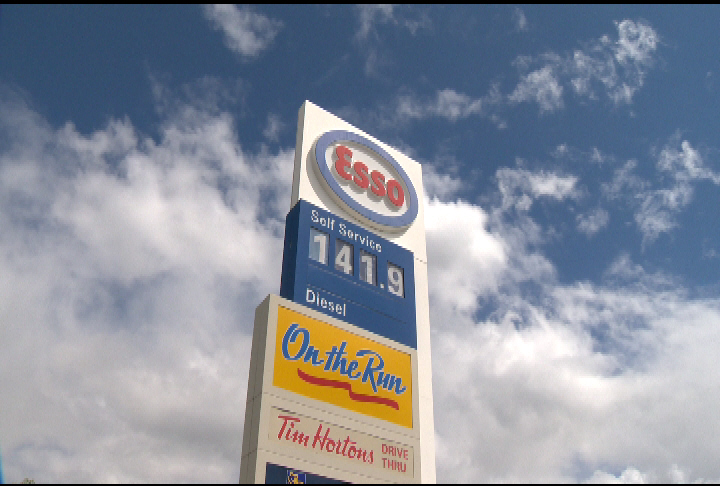TORONTO – The flooding in oil-rich Alberta doesn’t appear to have had any impact on Canadian gasoline prices so far, but observers are keeping an eye on the situation to see whether that may change.

CIBC economist Peter Buchanan said Monday that gasoline prices don’t seem to have been hit by the natural disaster, but added that most watchers are still trying to get a handle on the impact of the sudden and extreme event.
“When you have flooding, refineries are sensitive to that, but I’m not quite sure that (the flooding) is to the possible extent of refinery disruptions,” Buchanan said.
“If you did get that, that could certainly create more upward pressure on gasoline prices.”
Gasoline may also see a temporary hike if consumption increases with the use of water vehicles involved in rescue operations, or because of concern by the general population.
“The sort of effect when you have a weather-related disaster, traditionally, is that people are worried about the availability of gasoline so they rush out and fill up their cars and you get price spikes,” Buchanan.
Gas prices Monday did not appear to reflect that kind of panic. In Calgary, they ranged from $118.9 to $125.9 a litre for regular gas, well within the average price for Alberta of $123.157, according to the price tracking website GasBuddy.com.
In Ontario, where the average is $125.652 a litre, Torontonians were paying between $119.4 and $124.6 a litre.
- Posters promoting ‘Steal From Loblaws Day’ are circulating. How did we get here?
- Video shows Ontario police sharing Trudeau’s location with protester, investigation launched
- Canadian food banks are on the brink: ‘This is not a sustainable situation’
- Solar eclipse eye damage: More than 160 cases reported in Ontario, Quebec
Several energy companies headquartered in downtown Calgary have been forced to evacuate their offices after severe flooding, while Enbridge Inc. (TSX:ENB) is dealing with a weekend spill of synthetic crude in northern Alberta.
Enbridge said Sunday that unusually heavy rains may have resulted in a ground movement that affected Line 37, a 17-kilometre-long, 12-inch diameter pipe linking the Long Lake oilsands upgrader with the Athabasca system.
But there have not yet been reports of refineries completely shutting down because of the rains.
People in Calgary began returning to assess the damage Monday as the cleanup from last week’s flood continued, although those in High River, the community hardest hit by the flooding, still had no timeline for when they would be able to return home.
The surge of water was expected to head to the eastern Alberta city of Medicine Hat next, but flood watchers now say water levels on the South Saskatchewan River have peaked and flooding won’t be as severe as initially feared.
Patricia Mohr, an economist and commodity market specialist with Scotiabank, said she didn’t see a connection between the disaster and any impact on oil or gas prices, noting that the flooding was limited to specific spots not known for any major oil production facilities.
“Keep in mind it’s just around the rivers and the real impact of that flooding is mostly going to be in downtown Calgary and in the homes and communities around the river,” she said.
“The more important factor for commodity markets is actually what went on in China last week in their banking sector, and you’ve got oil prices moving down.”
Global commodity prices have also come under renewed pressure from last week’s comments by Federal Reserve chairman Ben Bernanke, who indicated that a stronger U.S. economy may lead the Fed to withdraw some economic stimulus my mid-2014.
According to Buchanan, the sectors most likely to be hit by the floods will be tourism, as travellers opt to stay away from the area altogether, and agriculture, because farmers will have to contend with sub-optimal growing conditions following the rains.
“The issue there is that people are making their summer travel plans now, and even if they manage to restore some services people may decide not to go there this summer,” he said.
“Don’t forget, if you’re talking about the eastern Rockies, you’re dealing with an international travel crowd and people have to make plans in advance. They may not always be quite sure what the situation on the ground is.”
One area that will predictably see a boom is the construction industry as the city begins to recover.
“They’re going to have to repair a lot of infrastructure, both private property that’s been damaged as well as public infrastructure like highways and railroads,” Buchanan said.
“It’s still pretty early going at this point, but we do see a sizable (overall) impact over the next few quarters.”



Comments